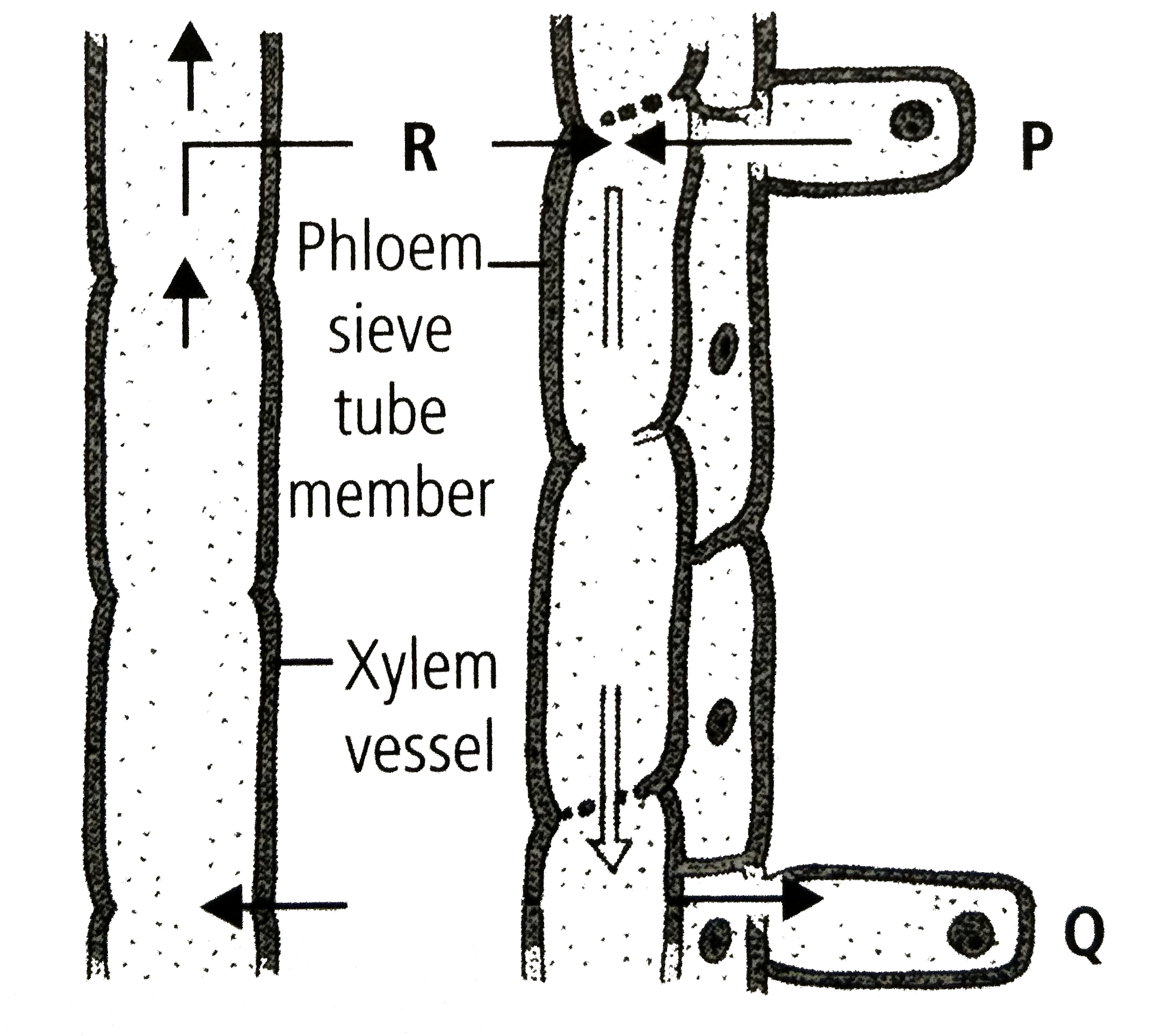According to pressure flow hypothesis in phloem transport, organic solutes flows from the regions of
Low turgor pressure
High turgor pressure
Low osmotic pressure
Low diffusion pressure
The correct Answer is:B
Step-by-Step Solution:
1. Understanding the Pressure Flow Hypothesis: The pressure flow hypothesis explains how organic solutes, primarily sugars, are transported through the phloem in plants. This process is driven by differences in turgor pressure between source and sink regions.
2. Identifying Source and Sink: In the context of phloem transport, the "source" refers to the regions of the plant where organic solutes are produced or stored, such as leaves (where photosynthesis occurs). The "sink" refers to regions where these solutes are utilized or stored, such as roots, fruits, and growing tissues.
3. Mechanism of Transport: According to the pressure flow hypothesis, organic solutes move from areas of high turgor pressure (sources) to areas of low turgor pressure (sinks). This movement occurs through a process called facilitated diffusion, where solutes move from regions of higher concentration to lower concentration.
4. Role of Turgor Pressure: The turgor pressure in the source (e.g., leaves) is high due to the accumulation of solutes, which draws water into the phloem through osmosis. This creates a pressure gradient that pushes the sap (which contains the organic solutes) towards the sink regions where the turgor pressure is lower.
5. Conclusion: Therefore, according to the pressure flow hypothesis, organic solutes flow from regions of high turgor pressure (sources) to regions of low turgor pressure (sinks).
Final Answer: Organic solutes flow from regions of high turgor pressure to regions of low turgor pressure.
---
Similar Questions
Knowledge Check
- Question 1 - Select One
According to the pressure flow model for translocation
ASugar conc. is highest near sink areaBWater enters the sieve tube by osmosisCSugar is transported out of the sieve tubes near the source areaDSugar is transported through phloem as glucose - Question 2 - Select One
Mass flow hypothesis was given by
AEarnst munchBThaineCMason and MaskellDMason - Question 3 - Select One
According to the pressure flow hypothesis
A. Phloem loading produces a hypertonic condition in the sieve tubes.
B. Water potential gradient facilitates the mass movement in the phloem.
C. Phloem unloading is a passive process .AA&B are incorrectBB &C are incorrectCA & B are correctDA & C are correct
Osmotic pressure at sink decreases in phloem transport because
View Solution(a) Describe the pressure flow hypothesis of translocation of sugar in plants.
(b) Explain the mechanism of closing and opening of stomata.View SolutionGiven figure demonstrates the translocation of organic solutes according to pressure flow hypothesis.

Which out of the following statements is incorrect regarding this?View SolutionThe pressure flow of mass flow hypothesis of pholem translocation explains that
View SolutionMunch's mass flow hypothesis explains
View Solution

